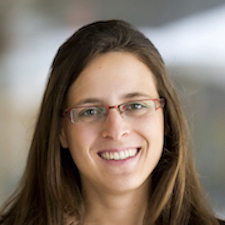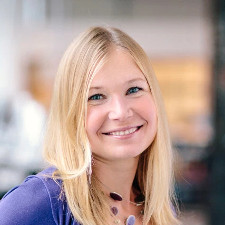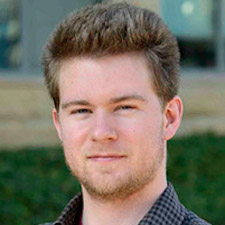Introduction
There is a great deal of interest in analyzing data that is best represented as a graph.
Examples include the WWW, social networks, biological networks, communication networks,
transportation networks, energy grids, and many others. These graphs are typically
multi-modal, multi-relational and dynamic. In the era of big data, the importance of being
able to effectively mine and learn from such data is growing, as more and more structured
and semi-structured data is becoming available. The workshop serves as a forum for
researchers from a variety of fields working on mining and learning from graphs to share and
discuss their latest findings.
There are many challenges involved in effectively mining and learning from this kind of
data, including:
- Understanding the different techniques applicable, including graph mining algorithms, network embeddings, graphical models, latent variable models, matrix factorization methods and more.
- Dealing with the heterogeneity of the data.
- The common need for information integration and alignment.
- Handling dynamic and changing data.
- Addressing each of these issues at scale.
Traditionally, a number of subareas have contributed to this space: communities in graph mining, learning from structured data, statistical relational learning, inductive logic programming, and, moving beyond subdisciplines in computer science, social network analysis, and, more broadly network science.
Schedule
Virtual (All times are Pacific Time)
All accepted papers will be presented in the poster session.
Based on scheduling constraints, some papers are selected as contributed talks or spotlight
presentations.
-Held jointly with International Workshop on Deep Learning on Graphs (KDD-DLG)-
| Morning Sessions | |
|---|---|
| 8:00 am | Opening Remarks |
8:15 am
|
Keynote: Jure Leskovec Graph Structure of Neural Networks: Good Neural Networks Are Alike |
8:45 am
|
Keynote: Philip Yu Broad Learning Via Heterogenous Information Networks |
| 9:15 am | Parallel Contributed Talks Junchen Jin Understanding and Evaluating Structural Node Embeddings Caleb Belth Mining Persistent Activity in Continually Evolving Networks |
9:45 am
|
Keynote: Fei Wang Deep Graph Mining for Healthcare |
| 10:15 am | Coffee Break/Social Networking |
10:30 am
|
Keynote: Danai Koutra The Power of Summarization in Network Analysis Video |
11:00 am
|
Keynote: Petar Veličković Algorithmic Inductive Biases |
| 11:30 am |
Parallel Poster Session (Spotlight Talks + Live Q/A) Breakout Z-rooms for both DLG and MLG |
12:00 pm | Lunch Break |
| Afternoon Sessions | |
|---|---|
1:00 pm
|
Keynote: Jimeng Sun Deep Learning for Drug Development |
| 1:30 pm | Parallel Contributed Talks William Shiao BRGAN: Generating Graphs of Bounded Rank Christopher Tran Heterogeneous Threshold Estimation for Linear Threshold Modeling |
2:00 pm
|
Keynote: Tyler Derr Self-supervised Learning on Graphs: Deep Insights and New Directions |
| 2:30 pm | Coffee Break/Social Networking |
2:45 pm
|
Keynote: Muhan Zhang Learning Graph Strcuture Features for Inductive Link Prediction and Matrix Completion |
3:15 pm
|
Keynote: Le Song Cybersecurity with Graph Neural Networks |
| 3:45 pm | Best Paper Award Ceremony + Closing Remarks |
| 4:00 pm |
Parallel Poster Session (Spotlight Talks + Live Q/A) Breakout Z-rooms for both DLG and MLG |
Keynote Speakers
Jointly with the International Workshop on Deep Learning on Graphs (KDD-DLG)

Danai Koutra
University of Michigan Ann Arbor

Jure Leskovec
Stanford University

Fei Wang
Cornell University

Philip Yu
University of Illinois at Chicago

Le Song
Georgia Institute of Technology

Jimeng Sun
University of Illinois Urbana-Champaign

Petar Velickovic
Deepmind

Muhan Zhang
Facebook AI

Tyler Derr
Vanderbilt University
Accepted Papers
A Scalable Parallel Hypergraph Generator (HyGen)
PDF
Video
S.M.Shamimul Hasan, Neena Imam and Ramakrishnan Kannan
Keywords: Hypergraph, MPI, C++, OLCF, Rhea
title={A Scalable Parallel Hypergraph Generator (HyGen)},
author={S.M.Shamimul Hasan, Neena Imam and Ramakrishnan Kannan},
booktitle={Proceedings of the 16th International Workshop on Mining and Learning with Graphs (MLG)},
year={2020}
}
Active Learning on Graphs with Geodesically Convex Classes
PDF
Video
Maximilian Thiessen and Thomas Gärtner
Keywords: active learning, graphs, geodesic convexity, node classification, multi-class, path cover
title={Active Learning on Graphs with Geodesically Convex Classes},
author={Maximilian Thiessen and Thomas Gärtner},
booktitle={Proceedings of the 16th International Workshop on Mining and Learning with Graphs (MLG)},
year={2020}
}
Adaptive Granularity in Time Evolving Graphs as Tensors
PDF
Video
Ravdeep Pasricha, Ekta Gujral and Evangelos Papalexakis
Keywords: Tensor analysis, unsupervised learning, time-evolving graphs
title={Adaptive Granularity in Time Evolving Graphs as Tensors},
author={Ravdeep Pasricha, Ekta Gujral and Evangelos Papalexakis},
booktitle={Proceedings of the 16th International Workshop on Mining and Learning with Graphs (MLG)},
year={2020}
}
Adversarial Learning for Debiasing Knowledge Graph Embeddings
PDF
Video
Mario Arduini, Lorenzo Noci, Federico Pirovano, Ce Zhang, Yash Raj Shrestha and Bibek
Paudel
Keywords: knowledge graph embedding, network embedding, adversarial network, bias in machine learning
title={Adversarial Learning for Debiasing Knowledge Graph Embeddings},
author={Mario Arduini, Lorenzo Noci, Federico Pirovano, Ce Zhang, Yash Raj Shrestha and Bibek Paudel},
booktitle={Proceedings of the 16th International Workshop on Mining and Learning with Graphs (MLG)},
year={2020}
}
BRGAN: Generating Graphs of Bounded Rank
PDF
Video
William Shiao and Evangelos Papalexakis
Keywords: graph generation, generative adversarial networks, graph rank
title={BRGAN: Generating Graphs of Bounded Rank},
author={William Shiao and Evangelos Papalexakis},
booktitle={Proceedings of the 16th International Workshop on Mining and Learning with Graphs (MLG)},
year={2020}
}
CONE-Align: Consistent Network Alignment with Proximity-Preserving Node
Embedding
PDF
Video
Xiyuan Chen, Mark Heimann, Fatemeh Vahedian and Danai Koutra
Keywords: network alignment, graph mining, node embeddings, neighborhood consistency
title={CONE-Align: Consistent Network Alignment with Proximity-Preserving Node Embedding},
author={Xiyuan Chen, Mark Heimann, Fatemeh Vahedian and Danai Koutra},
booktitle={Proceedings of the 16th International Workshop on Mining and Learning with Graphs (MLG)},
year={2020}
}
Characterising the atomic structure of mono-metallic nanoparticles from x-ray scattering
data using conditional generative models
PDF
Video
Andy S. Anker, Emil T. S. Kjær, Erik B. Dam, Simon J. L. Billinge, Kirsten M. Ø. Jensen and
Raghavendra Selvan
Keywords: generative modeling, mono-metallic nanoparticles, CVAE, Pair Distribution Function
title={Characterising the atomic structure of mono-metallic nanoparticles from x-ray scattering data using conditional generative models},
author={Andy S. Anker, Emil T. S. Kjær, Erik B. Dam, Simon J. L. Billinge, Kirsten M. Ø. Jensen and Raghavendra Selvan},
booktitle={Proceedings of the 16th International Workshop on Mining and Learning with Graphs (MLG)},
year={2020}
}
Collective Bio-Entity Recognition in Scientific Documents using Hinge-Loss Markov Random
Fields
PDF
Video
Alexander Miller, Naum Markenzon, Varun Embar and Lise Getoor
Keywords: probabilistic graphical models, embeddings, information extraction, word sense disambiguation, graphs, collective inference
title={Collective Bio-Entity Recognition in Scientific Documents using Hinge-Loss Markov Random Fields},
author={Alexander Miller, Naum Markenzon, Varun Embar and Lise Getoor},
booktitle={Proceedings of the 16th International Workshop on Mining and Learning with Graphs (MLG)},
year={2020}
}
Comparison of Graph Generation Models focusing on Accuracy and Variation
PDF
Video
Mei Fukuda, Kazuki Nakajima and Kazuyuki Shudo
Keywords: network analysis, graph generation models, estimation, sampling, social networks
title={Comparison of Graph Generation Models focusing on Accuracy and Variation},
author={Mei Fukuda, Kazuki Nakajima and Kazuyuki Shudo},
booktitle={Proceedings of the 16th International Workshop on Mining and Learning with Graphs (MLG)},
year={2020}
}
Decoupled Smoothing in Probabilistic Soft Logic
PDF
Video
Yatong Chen, Bryan Tor, Eriq Augustine and Lise Getoor
Keywords: Node Classification, Social Network Analysis, Decoupled Smoothing, Statistical Relational Learning
title={Decoupled Smoothing in Probabilistic Soft Logic},
author={Yatong Chen, Bryan Tor, Eriq Augustine and Lise Getoor},
booktitle={Proceedings of the 16th International Workshop on Mining and Learning with Graphs (MLG)},
year={2020}
}
Effectiveness of Sampling Strategies for One-shot Active Learning from Relational
Data
PDF
Video
Ragib Ahsan and Elena Zheleva
Keywords: Graph sampling, Active learning, Relational classification
title={Effectiveness of Sampling Strategies for One-shot Active Learning from Relational Data},
author={Ragib Ahsan and Elena Zheleva},
booktitle={Proceedings of the 16th International Workshop on Mining and Learning with Graphs (MLG)},
year={2020}
}
Efficient Algorithms to Mine Maximal Span-Trusses From Temporal Graphs
PDF
Video
Quintino Francesco Lotito and Alberto Montresor
Keywords: temporal graphs, graph mining, dense structures, community detection, social networks analysis
title={Efficient Algorithms to Mine Maximal Span-Trusses From Temporal Graphs},
author={Quintino Francesco Lotito and Alberto Montresor},
booktitle={Proceedings of the 16th International Workshop on Mining and Learning with Graphs (MLG)},
year={2020}
}
Examining COVID-19 Forecasting using Spatio-Temporal GNNs
PDF
Video
Amol Kapoor, Xue Ben, Luyang Liu, Bryan Perozzi, Matt Barnes, Martin Blais and Shawn
O'Banion
Keywords: machine learning, graph learning, covid-19
title={Examining COVID-19 Forecasting using Spatio-Temporal GNNs},
author={Amol Kapoor, Xue Ben, Luyang Liu, Bryan Perozzi, Matt Barnes, Martin Blais and Shawn O'Banion},
booktitle={Proceedings of the 16th International Workshop on Mining and Learning with Graphs (MLG)},
year={2020}
}
First and Higher-Order Bipartite Embeddings
PDF
Video
Justin Sybrandt and Ilya Safro
Keywords: bipartite graphs, hypergraphs, graph embedding, algebraic distance on graphs, recommendation, link prediction
title={First and Higher-Order Bipartite Embeddings},
author={Justin Sybrandt and Ilya Safro},
booktitle={Proceedings of the 16th International Workshop on Mining and Learning with Graphs (MLG)},
year={2020}
}
GATCheck: A Detailed Analysis of Graph Attention Networks
PDF
Video
Lovish Madaan and Siddhant Arora
Keywords: representation learning, node embeddings in graph networks, machine learning for graphs, graph attention networks
title={GATCheck: A Detailed Analysis of Graph Attention Networks},
author={Lovish Madaan and Siddhant Arora},
booktitle={Proceedings of the 16th International Workshop on Mining and Learning with Graphs (MLG)},
year={2020}
}
Graph Clustering with Graph Neural Networks
PDF
Video
Anton Tsitsulin, John Palowitch, Bryan Perozzi and Emmanuel Müller
Keywords: graph clustering, graph neural networks, graph convolutional networks, deep learning, attributed graph clustering
title={Graph Clustering with Graph Neural Networks},
author={Anton Tsitsulin, John Palowitch, Bryan Perozzi and Emmanuel Müller},
booktitle={Proceedings of the 16th International Workshop on Mining and Learning with Graphs (MLG)},
year={2020}
}
Graph Frequency Analysis of COVID-19 Incidence in the United States
PDF
Video
Yang Li and Gonzalo Mateos
Keywords: Graph data mining, graph signal processing, frequency analysis, contagion pattern recognition
title={Graph Frequency Analysis of COVID-19 Incidence in the United States},
author={Yang Li and Gonzalo Mateos},
booktitle={Proceedings of the 16th International Workshop on Mining and Learning with Graphs (MLG)},
year={2020}
}
Graph Summarization and Graph Embeddings: Towards A Spectral Connection
PDF
Video
Arpit Merchant and Michael Mathioudakis
Keywords: graph summarization, graph embeddings, spectral graph theory
title={Graph Summarization and Graph Embeddings: Towards A Spectral Connection},
author={Arpit Merchant and Michael Mathioudakis},
booktitle={Proceedings of the 16th International Workshop on Mining and Learning with Graphs (MLG)},
year={2020}
}
Graph-based State Representation for Deep Reinforcement Learning
PDF
Video
Vikram Waradpande, Daniel Kudenko and Megha Khosla
Keywords: Deep Reinforcement Learning, Deep Q-Learning, Markov Decision Processes, Unsupervised Node Embeddings, Graph Neural Networks, Graph representation
title={Graph-based State Representation for Deep Reinforcement Learning},
author={Vikram Waradpande, Daniel Kudenko and Megha Khosla},
booktitle={Proceedings of the 16th International Workshop on Mining and Learning with Graphs (MLG)},
year={2020}
}
Heterogeneous Threshold Estimation for Linear Threshold Modeling
PDF
Video
Christopher Tran and Elena Zheleva
Keywords: heterogeneous treatment effects, linear threshold model, causal inference, information diffusion
title={Heterogeneous Threshold Estimation for Linear Threshold Modeling},
author={Christopher Tran and Elena Zheleva},
booktitle={Proceedings of the 16th International Workshop on Mining and Learning with Graphs (MLG)},
year={2020}
}
Hop Sampling: A Simple Regularized Graph Learning for Non-Stationary
Environments
PDF
Video
Young-Jin Park, Kyuyong Shin and Kyungmin Kim
Keywords: Graph neural networks, Graph representation, Non-stationary graphs, Recommender System, Mobile Coupon Service
title={Hop Sampling: A Simple Regularized Graph Learning for Non-Stationary Environments},
author={Young-Jin Park, Kyuyong Shin and Kyungmin Kim},
booktitle={Proceedings of the 16th International Workshop on Mining and Learning with Graphs (MLG)},
year={2020}
}
Influence of Asymmetry and Structural Roles on Triad Patterns in Undirected
Networks
PDF
Video
Milos Kudelka, Eliska Ochodkova, Jakub Plesnik and Sarka Zehnalova
Keywords: social network, triadic closure, structural role, asymmetric dependency, triad pattern
title={Influence of Asymmetry and Structural Roles on Triad Patterns in Undirected Networks},
author={Milos Kudelka, Eliska Ochodkova, Jakub Plesnik and Sarka Zehnalova},
booktitle={Proceedings of the 16th International Workshop on Mining and Learning with Graphs (MLG)},
year={2020}
}
Karate Club: An API Oriented Open-Source Python Framework for Unsupervised Learning on
Graphs
PDF
Video
Benedek Rozemberczki, Olivér Kiss and Rik Sarkar
Keywords: community detection, graph embedding, node embedding, graph classification, node classification, Python, implicit factorization, graph clustering
title={Karate Club: An API Oriented Open-Source Python Framework for Unsupervised Learning on Graphs},
author={Benedek Rozemberczki, Olivér Kiss and Rik Sarkar},
booktitle={Proceedings of the 16th International Workshop on Mining and Learning with Graphs (MLG)},
year={2020}
}
Learning Distributed Representations of Graphs with Geo2DR
PDF
Video
Paul Scherer and Pietro Lio
Keywords: Graph Representation Learning, Research Toolkit, Reproducibility, Distributed Representations, Neural Language Model, Graph Kernel
title={Learning Distributed Representations of Graphs with Geo2DR},
author={Paul Scherer and Pietro Lio},
booktitle={Proceedings of the 16th International Workshop on Mining and Learning with Graphs (MLG)},
year={2020}
}
Learning Generic Representations for Dynamic Social Interaction
PDF
Video
Yanbang Wang, Pan Li, Chongyang Bai, V.S. Subrahmanian and Jure Leskovec
Keywords: Social Interaction, Dynamic Network, Representation Learning, Deception Detection
title={Learning Generic Representations for Dynamic Social Interaction},
author={Yanbang Wang, Pan Li, Chongyang Bai, V.S. Subrahmanian and Jure Leskovec},
booktitle={Proceedings of the 16th International Workshop on Mining and Learning with Graphs (MLG)},
year={2020}
}
Link Predictions in an Online Health Community for Smoking Cessation
PDF
Video
Sulyun Lee, Hankyu Jang, Kang Zhao, Michael S. Amato and Amanda L. Graham
Keywords: Social Network, Network Embedding, Multi-Relational Network, Supervised Learning, Smoking Cessation
title={Link Predictions in an Online Health Community for Smoking Cessation},
author={Sulyun Lee, Hankyu Jang, Kang Zhao, Michael S. Amato and Amanda L. Graham},
booktitle={Proceedings of the 16th International Workshop on Mining and Learning with Graphs (MLG)},
year={2020}
}
Little Ball of Fur: A Python Library for Graph Sampling
PDF
Video
Benedek Rozemberczki, Olivér Kiss and Rik Sarkar
Keywords: network sampling, graph sampling, subsampling, network analytics, graph mining, Python
title={Little Ball of Fur: A Python Library for Graph Sampling},
author={Benedek Rozemberczki, Olivér Kiss and Rik Sarkar},
booktitle={Proceedings of the 16th International Workshop on Mining and Learning with Graphs (MLG)},
year={2020}
}
MIDAS: Microcluster-Based Detector of Anomalies in Edge Streams
PDF
Video
Siddharth Bhatia, Bryan Hooi, Minji Yoon, Kijung Shin and Christos Faloutsos
Keywords: Edge Streams, Microcluster, Dynamic Graphs, Anomaly Detection
title={MIDAS: Microcluster-Based Detector of Anomalies in Edge Streams },
author={Siddharth Bhatia, Bryan Hooi, Minji Yoon, Kijung Shin and Christos Faloutsos},
booktitle={Proceedings of the 16th International Workshop on Mining and Learning with Graphs (MLG)},
year={2020}
}
Mining Persistent Activity in Continually Evolving Networks
PDF
Video
Caleb Belth, Xinyi Zheng and Danai Koutra
Keywords: Persistence, Evolving Networks, Edge Streams
title={Mining Persistent Activity in Continually Evolving Networks},
author={Caleb Belth, Xinyi Zheng and Danai Koutra},
booktitle={Proceedings of the 16th International Workshop on Mining and Learning with Graphs (MLG)},
year={2020}
}
Network Embedding with Attribute Refinement
PDF
Video
Tong Xiao, Yuan Fang, Hongxia Yang and Vincent W. Zheng
Keywords: Network embedding, attribute refinement, homophily
title={Network Embedding with Attribute Refinement},
author={Tong Xiao, Yuan Fang, Hongxia Yang and Vincent W. Zheng},
booktitle={Proceedings of the 16th International Workshop on Mining and Learning with Graphs (MLG)},
year={2020}
}
Network Experiment Design for Estimating Direct Treatment Effects
PDF
Video
Zahra Fatemi and Elena Zheleva
Keywords: Causal Inference, Network experiment design, Peer effect, Direct treatment effect
title={Network Experiment Design for Estimating Direct Treatment Effects},
author={Zahra Fatemi and Elena Zheleva},
booktitle={Proceedings of the 16th International Workshop on Mining and Learning with Graphs (MLG)},
year={2020}
}
On Structural vs. Proximity-based Temporal Node Embeddings
PDF
Video
Puja Trivedi, Alican Büyükçakır, Yin Lin, Yinlong Qian, Di Jin and Danai Koutra
Keywords: temporal graphs, graph embeddings, temporal link prediction
title={On Structural vs. Proximity-based Temporal Node Embeddings},
author={Puja Trivedi, Alican Büyükçakır, Yin Lin, Yinlong Qian, Di Jin and Danai Koutra},
booktitle={Proceedings of the 16th International Workshop on Mining and Learning with Graphs (MLG)},
year={2020}
}
Robust Unsupervised Mining of Dense Sub-Graphs at Multiple Resolutions
PDF
Video
Neil Gupta, Gunjan Gupta, Joydeep Ghosh, Sheshank Shankar and Alex Mallen
Keywords: graph learning, dense graphs, hierarchical clusters, visualization, automated cluster selection, social graphs, hierarchical mode analysis
title={Robust Unsupervised Mining of Dense Sub-Graphs at Multiple Resolutions},
author={Neil Gupta, Gunjan Gupta, Joydeep Ghosh, Sheshank Shankar and Alex Mallen},
booktitle={Proceedings of the 16th International Workshop on Mining and Learning with Graphs (MLG)},
year={2020}
}
SNAPSKETCH: Graph Representation Approach for Intrusion Detection in a Streaming
Graph
PDF
Video
Ramesh Paudel and William Eberle
Keywords: Graph Representation, Anomaly Detection, DoS Attack, Intrusion Detection, Graph Sketching
title={SNAPSKETCH: Graph Representation Approach for Intrusion Detection in a Streaming Graph},
author={Ramesh Paudel and William Eberle},
booktitle={Proceedings of the 16th International Workshop on Mining and Learning with Graphs (MLG)},
year={2020}
}
Scalable and Consistent Estimation in Continuous-time Networks of Relational
Events
PDF
Video
Makan Arastuie, Subhadeep Paul and Kevin S. Xu
Keywords: Community Hawkes Independent Pairs model, event-based network, continuous-time network, timestamped network, relational events, spectral clustering, Hawkes process
title={Scalable and Consistent Estimation in Continuous-time Networks of Relational Events},
author={Makan Arastuie, Subhadeep Paul and Kevin S. Xu},
booktitle={Proceedings of the 16th International Workshop on Mining and Learning with Graphs (MLG)},
year={2020}
}
Scale-Free, Attributed and Class-Assortative Graph Generation to Facilitate
Introspection of Graph Neural Networks
PDF
Video
Neil Shah
Keywords: semi-supervised learning, graph generation, barabasi albert, graphs
title={Scale-Free, Attributed and Class-Assortative Graph Generation to Facilitate Introspection of Graph Neural Networks},
author={Neil Shah},
booktitle={Proceedings of the 16th International Workshop on Mining and Learning with Graphs (MLG)},
year={2020}
}
Substitution Techniques for Grocery Fulfillment and Assortment Optimization Using
Product Graphs
PDF
Video
Amit Pande, Aparupa Das Gupta, Kai Ni, Rahul Biswas and Sayon Majumdar
Keywords: Product Substitutes, Data Mining, Graph, Assortment Optimization
title={Substitution Techniques for Grocery Fulfillment and Assortment Optimization Using Product Graphs},
author={Amit Pande, Aparupa Das Gupta, Kai Ni, Rahul Biswas and Sayon Majumdar},
booktitle={Proceedings of the 16th International Workshop on Mining and Learning with Graphs (MLG)},
year={2020}
}
TIES: Temporal Interaction Embeddings For Enhancing Social Media Integrity At
Facebook
PDF
Video
Nima Noorshams, Saurabh Verma and Aude Hofleitner
Keywords: temporal embeddings, sequence modeling, social media integrity
title={TIES: Temporal Interaction Embeddings For Enhancing Social Media Integrity At Facebook},
author={Nima Noorshams, Saurabh Verma and Aude Hofleitner},
booktitle={Proceedings of the 16th International Workshop on Mining and Learning with Graphs (MLG)},
year={2020}
}
Understanding and Evaluating Structural Node Embeddings
PDF
Video
Junchen Jin, Mark Heimann, Di Jin and Danai Koutra
Keywords: structural node embeddings, network embedding, role equivalence, intrinsic evaluation, extrinsic evaluation
title={Understanding and Evaluating Structural Node Embeddings},
author={Junchen Jin, Mark Heimann, Di Jin and Danai Koutra},
booktitle={Proceedings of the 16th International Workshop on Mining and Learning with Graphs (MLG)},
year={2020}
}
Unsupervised Hierarchical Graph Representation Learning by Mutual Information
Maximization
PDF
Video
Fei Ding, Xiaohong Zhang, Justin Sybrandt and Ilya Safro
Keywords: graph neural networks, representation learning, unsupervised learning, hierarchical representation, mutual information
title={Unsupervised Hierarchical Graph Representation Learning by Mutual Information Maximization},
author={Fei Ding, Xiaohong Zhang, Justin Sybrandt and Ilya Safro},
booktitle={Proceedings of the 16th International Workshop on Mining and Learning with Graphs (MLG)},
year={2020}
}
Call for Papers
Due to public health concerns in light of the unfolding COVID-19 outbreak. We will follow exactly the option that ACM SIGKDD and the KDD 2020 organizing committee will suggest and will follow the style that the KDD conference adopts. Please check this website regularly for updates.
This workshop is a forum for exchanging ideas and methods for mining and learning with graphs, developing new common understandings of the problems at hand, sharing of data sets where applicable, and leveraging existing knowledge from different disciplines. The goal is to bring together researchers from academia, industry, and government, to create a forum for discussing recent advances in graph analysis. In doing so, we aim to better understand the overarching principles and the limitations of our current methods and to inspire research on new algorithms and techniques for mining and learning with graphs.
To reflect the broad scope of work on mining and learning with graphs, we encourage submissions that span the spectrum from theoretical analysis to algorithms and implementation, to applications and empirical studies. As an example, the growth of user-generated content on blogs, microblogs, discussion forums, product reviews, etc., has given rise to a host of new opportunities for graph mining in the analysis of social media. We encourage submissions on theory, methods, and applications focusing on a broad range of graph-based approaches in various domains.
Topics of interest include, but are not limited to:
- Theoretical aspects:
- Computational or statistical learning theory related to graphs
- Theoretical analysis of graph algorithms or models
- Sampling and evaluation issues in graph algorithms
- Analysis of dynamic graphs
- Algorithms and methods:
- Graph mining
- Probabilistic and graphical models for structured data
- Heterogeneous/multi-model graph analysis
- Network embedding models
- Statistical models of graph structure
- Combinatorial graph methods
- Semi-supervised learning, active learning, transductive inference, and transfer learning in the context of graph
- Applications and analysis:
- Analysis of social media
- Analysis of biological networks
- Knowledge graph construction
- Large-scale analysis and modeling
We welcome many kinds of papers, such as, but not limited to:
- Novel research papers
- Demo papers
- Work-in-progress papers
- Visionary papers (white papers)
- Appraisal papers of existing methods and tools (e.g., lessons learned)
- Relevant work that has been previously published
- Work that will be presented at the main conference
Authors should clearly indicate in their abstracts the kinds of submissions
that the papers belong to, to help reviewers better understand their contributions.
All papers will be peer reviewed, single-blinded.
Submissions must be in PDF, no more than 8 pages long — shorter papers are
welcome — and formatted according to the standard double-column ACM
Proceedings Style.
The accepted papers will be published on the workshop’s website and will not be considered
archival for resubmission purposes.
Authors whose papers are accepted to the workshop will have the opportunity to participate
in a spotlight and poster session, and some set will also be chosen for oral presentation.
For paper submission, please proceed to the submission website.
This year MLG will be held jointly with the International Workshop on Deep Learning on Graphs (KDD-DLG). DLG will maintain a separate submission website and program committee.
Please send enquiries to chair@mlgworkshop.org.
To receive updates about the current and future workshops and the Graph Mining community, please join the Mailing List, or follow the Twitter Account.
Important Dates
Paper Submission Deadline: June 15, 2020
Author Notification: July 15, 2020
Camera Ready: August 1, 2020
Workshop: August 24, 2020
Workshop Organizers

Shobeir Fakhraei
Machine Learning Scientist
Amazon

Aude Hofleitner
Research Scientist Manager
Facebook

Julian McAuley
Associate Professor
University of California San Diego

Bryan Perozzi
Research Scientist
Google Research

Tim Weninger
Associate Professor
University of Notre Dame
Program Committee
Aris Anagnostopoulos (Sapienza University of Rome)
Ana Paula Appel (IBM Research Brazil)
Christian Bauckhage (Fraunhofer)
Austin Benson (Cornell University)
Siddharth Bhatia (National University of Singapore)
Aleksandar Bojchevski (Technical University of Munich)
Ulf Brefeld (Leuphana Universität Lüneburg)
Marco Bressan (Sapienza University of Rome)
Ivan Brugere (University of Illinois at Chicago)
Ting Chen (University of California, Los Angeles)
Hocine Cherifi (University of Burgundy)
Aaron Clauset (University of Colorado Boulder)
Alessandro Epasto (Google)
Dhivya Eswaran (Amazon)
Yuan Fang (Singapore Management University)
William Hamilton (Stanford University)
Larry Holder (Washington State University)
Bryan Hooi (National University of Singapore)
Jin Kyu Kim (Facebook)
Danai Koutra (University of Michigan)
Stefano Leucci (University of L'Aquila)
Jundong Li (University of Virginia)
Fred Morstatter (University of Southern California)
Blaz Novak (Jozef Stefan Institute)
John Palowitch (Google)
Evangelos Papalexakis (University of California Riverside)
Ali Pinar (Sandia National Laboratories)
Jan Ramon (INRIA)
Sucheta Soundarajan (Syracuse University)
Acar Tamersoy (NortonLifeLock Research Group)
Hanghang Tong (University of Illinois at UC)
Stefan Wrobel (Fraunhofer IAIS & Univ. of Bonn)
Xin-Zeng Wu (Information Sciences Institute)
Zhongfei Zhang (SUNY Binghamton)
Previous Workshops
2019, Anchorage, USA (co-located with KDD) 2018, London, United Kingdom (co-located with KDD) 2017, Halifax, Nova Scotia, Canada (co-located with KDD) 2016, San Francisco, USA (co-located with KDD) 2013, Chicago, USA (co-located with KDD) 2012, Edinburgh, Scotland (co-located with ICML) 2011, San Diego, USA (co-located with KDD) 2010, Washington, USA (co-located with KDD) 2009, Leuven, Belgium (co-located with SRL and ILP) 2008, Helsinki, Finland (co-located with ICML) 2007, Firenze, Italy 2006, Berlin, German (co-located with ECML and PKDD) 2005, Porto, Portugal, October 7, 2005 2004, Pisa, Italy, September 24, 2004 2003, Cavtat-Dubrovnik, Croatia